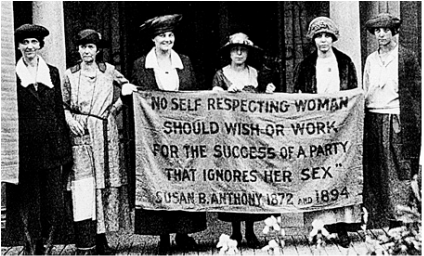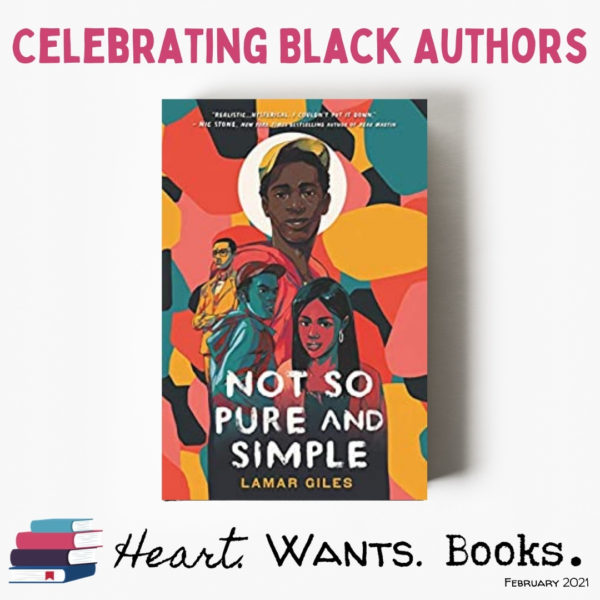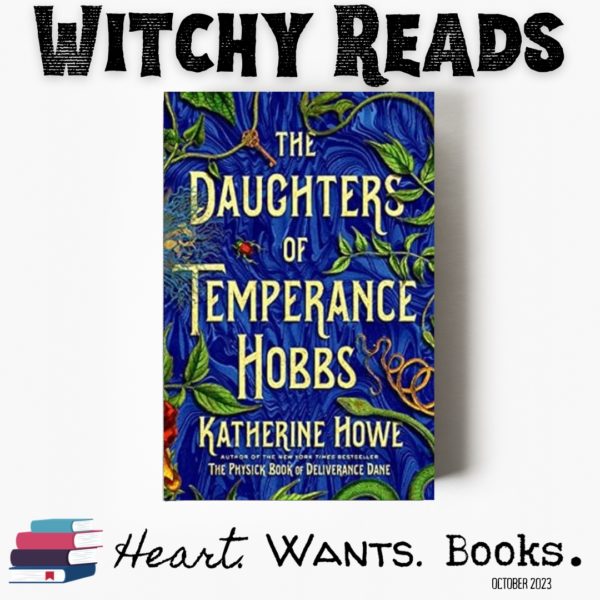The Witches of New York by Ami McKay October 29, 2020
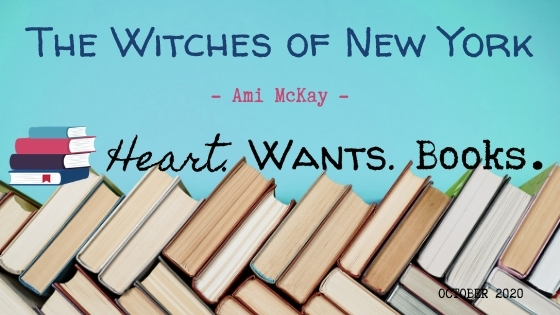
The following post includes affiliate links. More details here.

It’s a little bittersweet to be discussing our final witchy read together the day before Virtual Book Club. The Southern Book Club’s Guide to Slaying Vampires by Grady Hendrix has a group of Charleston women coming together for a typical discussion of “inappropriate book titles” when we discuss their antics via a free virtual meeting platform of our choice tomorrow, Friday, October 30th at 7:30 p.m. CST. Be sure to register here to get in on the fun and create our own group of readers that can exercise great power when we work together.

If I didn’t already love author Ami McKay from her author’s notes and acknowledgements at the end of The Witches of New York then the first lines of her website bio would have sealed my fate forever. It reads: “My first kiss was in the reference section of a Carnegie Public Library in rural Indiana. I strongly suspect there was magic afoot.” There is magic in every line of this music theorist turned novelist’s words about women finding their coven and together being unstoppable against the people who wish them harm. McKay has written three novels, one novella, a memoir, and three stage plays, and still composes music. She lives in Nova Scotia.
The Witches of New York was everything I expected of a book about Gilded Age women and so much more. Just as the advertisement that Beatrice Dunn follows to St. Clair and Thom’s Tea and Sympathy shop states, “those adverse to magic need not apply,” anyone who denies the power of women working together need not read this book for you will be proven wrong. The first few chapters of the book seem disjointed, but any reader will begin to see the threads that connect the characters, both female and male, realizing that McKay is preparing to pull them all together into a story greater than the sum of its parts. Just like magic.
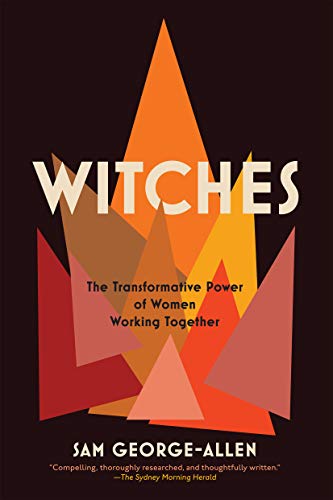
Witches: The Transformative Power of Women Working Together is a nonfiction title we purchased and placed on our TBR for this month but the title goes to prove what Ami McKay (and Grady Hendrix!) wrote about. Women and especially witches get the job done. (Hamilton reference for the win!) What I really loved in The Witches of New York was not just how our three main witches worked together but how women on their periphery brought their own power, influence, and magic to make change happen in the lives of Adelaide Thom, Eleanor St. Clair, and Beatrice Dunn. My favorite is Judith Dashley. Her name being this amazing amalgamation of my mother’s name and my own (Judith D. and Ashley) certainly doesn’t hurt but the way she grows from meddlesome customer to a member of their coven “framily” is a joy to see. Additionally, the visiting women from the spirit world are sometimes spooky but always a catalyst for change.

I give The Witches of New York four stars and I will definitely be reading Half Spent Was the Night: A Witches’ Yuletide before the end of 2020. It’s a novella continuing the story of Eleanor, Adelaide, and Beatrice. The rest of McKay’s backlist is also on the TBR. I hope that Judith Dashley is a part of it!
Is there a book that you kept putting off because it was going to be the end of a season and you wanted it to last a little longer?
~Ashley
Dear readers, any day of the week I’m interested in a well-written tale of someone finding themself, and jumping into being that new-found person with both feet. Should we all be so lucky to find ourselves and get to live into it. I realize that happens through hard work and dedication, but it’d be much more fun if it happened in response to a job ad instead, as it happens for Beatrice in The Witches of New York. Bonus points for strong, independent women cheered on by the smart, supportive men in their lives and further bonus points for magic. (And if you enjoy all this, you’ll love next week’s books too. Yes plural, just minus the magic, although I’m inclined to believe there’s always magic in a well-written tale.)
We’ve been loving this month’s witchy reads and today’s title is no different. Going back to Alice Hoffman’s words, the women of The Witches of New York are all on the periphery of society for one reason or another, but they’re also all focused on helping others and following their own, albeit “abnormal” path. I say abnormal, because in the Gilded Age, getting married, having babies, and taking care of one’s family and home seemed to be the only normal thing for a woman to do, as even a spinster teacher was subject to judgement and restrictions. Thank goodness for all that has happened in the past 100 years and for all those who diligently fought for the progress we’ve made. Sadly we have more to go, but alas back to the book at hand. I’m also thankful for one thing that hasn’t changed, a group of women working together towards a common goal is a force to be reckoned with, both in the 1880s, the 1980s, and today (yes, that is The Witches of New York, The Southern Book Club’s Guide to Slaying Vampires, and today). As this tale gets started, just as Ashley mentions, it feels disjointed because we have several threads waiting to be braided together in this gorgeous story. I was not surprised to learn that Ami McKay is a composer because the writing has a sort of ebb and flow in places as a melody and chorus would, but it also flows together seamlessly, even with the different dialogues and threads that do come together.
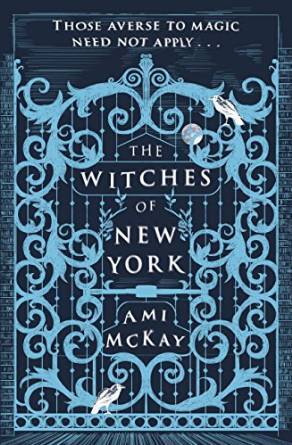
The most interesting thing I found about The Witches of New York wasn’t the magic (even though I adored every. single. magical. word), it was the glimpse into Gilded Age New York, specifically the more hidden aspects like the women’s asylum / prison that holds weekly dances for gentlemen visitors and the viewings at the morgue. I’m not sure how I thought the remains of individuals were identified at the time, but it certainly wasn’t by creating a display that reminded me of a holiday shop window. Another thing I enjoyed is the menfolk. We have several supporting gentlemen in this cast as well as a couple of men whose story we get from their perspective. While all of these men support the progression of the plot, they also (mostly) support the women in their work and desires. Yes friends, even in the Gilded Age, it was possible for men and women to work towards a goal set by women, and it was possible for men to support independent women and not be intimidated by them (or at least not intimidated to the point of trying to prevent their success).
The most disappointing piece about the story of Beatrice Dunn is that Ashley and I can’t go to St. Clair and Thom’s Tea and Sympathy for a nice cuppa from Eleanor, a chat with Adelaide and her cards, and a visit with Beatrice to see how she’s fairing. Also disappointing, predictably the lack of a nice, extended epilogue. As Ashley shared, McKay takes care of this, we think, with Half Spent Was the Night: A Witches’ Yuletide and I am HERE. FOR. IT because I need to know what happens next. I also give The Witches of New York a solid four stars. I’m not sure I’ll be rereading The Witches of New York, but it would be a delightful comfort read for a cool fall or winter day, and I’m definitely here for more from Ami McKay as her style is unique and delightful.
What book have you read lately that didn’t start how you expected but became glorious before the ending?
~Nikki
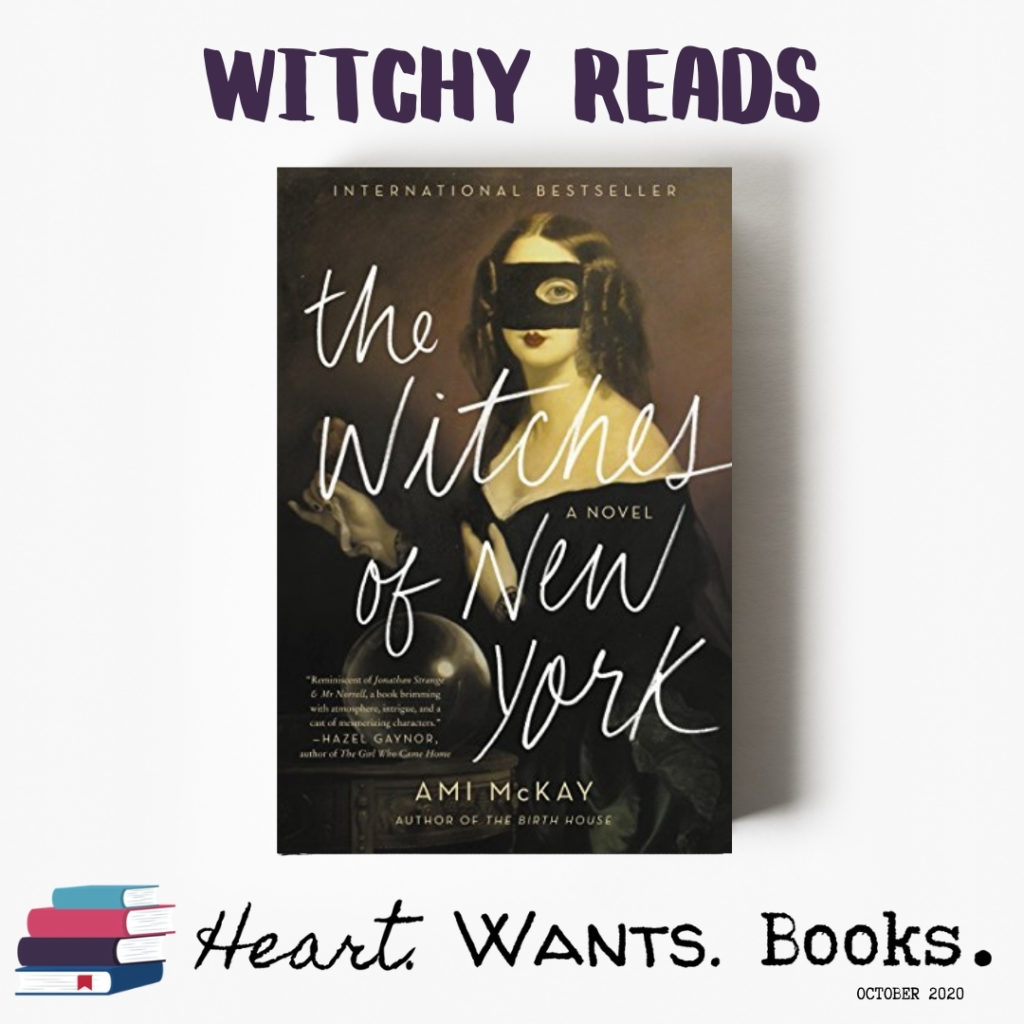
PLEASE SUPPORT US WHEN YOU SHOP BY FIRST CLICKING ON THE IMAGES BELOW:

